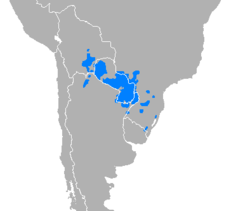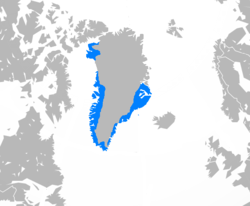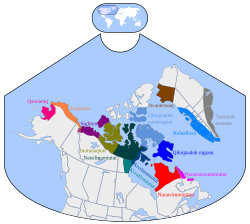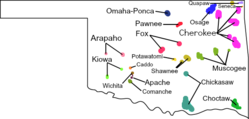This article needs additional citations for verification .(October 2023) |
| Atikamekw | |
|---|---|
| atikamekw nehiromowin | |
| Native to | Canada |
| Region | Quebec |
| Ethnicity | Atikamekw |
Native speakers | 6,200 (2016 census) [1] |
Algic
| |
| Language codes | |
| ISO 639-3 | atj |
| Glottolog | atik1240 |
| ELP | Attikamek |
| Linguasphere | 62-ADA-c |
 Atikamekw is classified as Vulnerable by the UNESCO Atlas of the World's Languages in Danger | |
| atikamekw / nehirowisiw "lake whitefish" / "Indigenous person" | |
|---|---|
| Person | Atikamekw Nehirowisiw |
| People | Atikamekw Nehirowisiwok |
| Language | Atikamekw Nehiromowin |
| Country | Nitaskinan (Nehirowisi Aski) |
Atikamekw (endonym: Atikamekw Nehiromowin, literally "Atikamekw native language") is a variety of the Algonquian language Cree [ citation needed ] and the language of the Atikamekw people of southwestern Quebec, Canada. It is spoken by nearly all the Atikamekw, and therefore it is among the indigenous languages least threatened with extinction, according to some studies. [3]
Contents
Atikamekw is a language belonging to the Cree–Montagnais–Naskapi linguistic continuum, which is part of the Central branch of the Algonquian languages of the Algic family of languages. It is sometimes classified as a dialect of Cree.[ citation needed ]
The Atikamekw reflex of Proto-Algonquian liquid ("L" sound) *l is [ ɾ ] (spelled 'r'). The corresponding sound in other Cree dialects is [ n ], [ j ], [ l ], or [ ð ] (it is consistently one of these depending on the dialect). So, alternatively, it is also referred to as the "r-Dialect of Cree".[ citation needed ] Another way in which Atikamekw is distinctive among dialects of Cree is in having many loanwords from the Anishinaabe language.[ citation needed ]
















